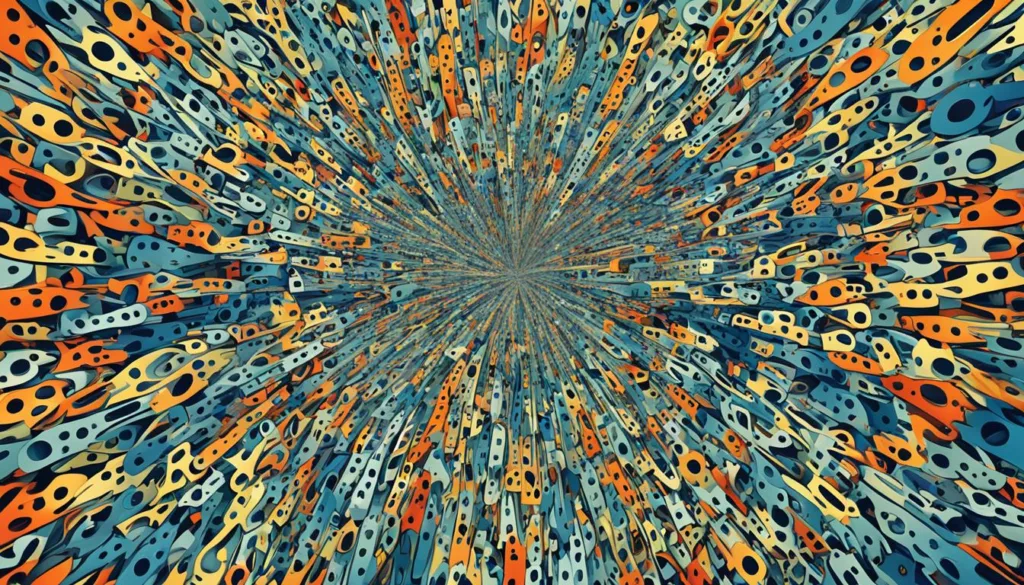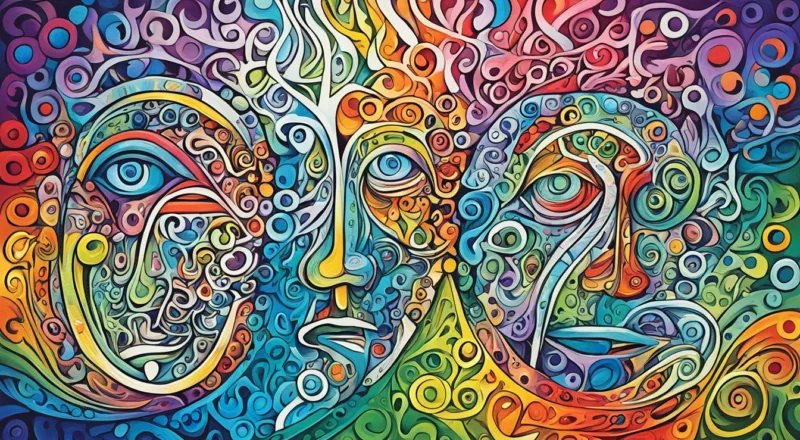Delusional Disorder vs. Schizophrenia: Symptoms and Proven Treatments in 2024
Delusional Disorder vs. Schizophrenia: Symptoms & Treatment in 2024
Delusional Disorder vs. Schizophrenia: Understanding the Differences in Symptoms and Treatments (2024 Update)
While both delusional disorder and schizophrenia are classified as severe mental illnesses, they can manifest quite differently. Distinguishing between delusional disorder and schizophrenia is crucial for receiving an accurate diagnosis and effective treatment. This article will explore the key characteristics of each condition, including their distinct symptoms, proven treatment options available in 2024, and how they can impact a person’s daily life.
Beyond the Shadow: Understanding Delusional Disorder vs. Schizophrenia
Recent studies show about 3 million Americans live with delusional disorder. Although overshadowed by schizophrenia, this condition is complex and often misunderstood. We will explore the differences between these disorders, examining their symptoms, diagnosis, and the best treatments in 2024.
Both delusional disorder and schizophrenia are psychotic disorders that alter perception of reality. They are listed in the Diagnostic and Statistical Manual of Mental Disorders, 5th edition, text revision (DSM-5-TR), a global guide for diagnosing mental health issues. Understanding their unique traits is key to accurate diagnosis and effective, personalized treatment.
Key Takeaways
- Delusional disorder and schizophrenia are both psychotic disorders, but they differ in symptom scope, severity, and diagnostic stability.
- Delusional disorder is primarily characterized by the presence of at least one persistent delusion, while schizophrenia involves a broader range of symptoms, including hallucinations and disorganized thinking.
- Treatments for both conditions often involve a combination of psychotherapy and medication management, with the goal of reducing symptoms and improving overall functioning.
- Delusional disorder is considered one of the most under-researched psychiatric disorders, and the exact prevalence is not well-established, but estimates suggest it affects around 0.2% to 2% of the general population.
- Understanding the unique characteristics of delusional disorder and schizophrenia is crucial for accurate diagnosis and the tailored treatment approaches.
Understanding Delusional Disorder
Delusional disorder is when someone has a psychotic disorder. It means they hold onto a false belief strongly for at least a month. This belief is usually not shared by others.
It’s different from schizophrenia, which brings more psychotic symptoms. These can include hallucinations and thinking that’s all over the place.
What is Delusional Disorder?
It’s a type of psychotic disorder. People suffering from it hold onto one or more delusions strongly for over a month. The delusions usually focus on one topic, like thinking someone is following them or believing they have extraordinary abilities.
Despite these beliefs, their day-to-day life often functions ok. Their emotional swings are also usually brief.
Subtypes of Delusional Disorder
There are different types of delusional disorder, based on what the delusion is about. Some main ones include:
- Persecutory delusions: Feeling like others are out to harm or conspire against them.
- Grandiose delusions: Believing they are someone important or have special powers.
- Somatic delusions: Thinking they have a physical defect or a medical condition.
- Erotomaniac delusions: The belief that someone else is in love with them.
- Jealous delusions: Thinking their partner is being unfaithful.
- Mixed delusions: A mix of the above types, where they believe multiple false things.
Possible Neurological Causes
The causes behind delusional disorder are not fully clear. Some studies point to issues in the brain. These could be due to:
- Changes in the brain’s structure or the presence of lesions in certain areas
- Neurological diseases like Parkinson’s or Alzheimer’s
- Head injuries or strokes
- Unbalance in hormones or issues with the endocrine system
Possible Psycho-Social Causes
Not just brain issues, but life events and surroundings may also lead to delusional disorder. These factors include:
- Bad experiences or abuse during childhood
- Very stressful events or life changes
- Feeling alone without support from others
- Having certain personal traits or disorders, like being paranoid or having schizotypal personality disorder
Delusional Disorder vs. Schizophrenia
Delusional disorder and schizophrenia are both psychotic disorders. Yet, they are different in keyways. Knowing these differences is very important for diagnosing and treating them.
Symptom Scope
The biggest difference is the types of symptoms. People with delusional disorder often have just one strong belief. This belief is well organized and focused on a single topic.
On the other hand, schizophrenia comes with more varied symptoms. These can include seeing or hearing things others don’t (hallucinations), jumbled thoughts, and erratic behavior.
Severity and Duration
Delusional disorder is usually less severe than schizophrenia. The impact of delusions on daily life can be big. But overall, it’s not as serious.
Also, the symptoms of delusional disorder tend to come and go. Schizophrenia’s symptoms are often ongoing or chronic.
Diagnostic Stability
Delusional disorder’s diagnosis tends to stay the same over time. This is because the symptoms don’t often change. In schizophrenia, symptoms can change, leading to varied or evolving diagnosis.
Age of Onset
The age when each disorder first appears is different. Delusional disorder usually starts in middle age. The typical age is around 40.
Schizophrenia, however, often begins much earlier, from the late teens to early 30s.
Symptoms of Delusional Disorder and Schizophrenia
It’s key to know the different symptoms of delusional disorder and schizophrenia for correct diagnosis and planning treatment. Both have psychotic features, but the types and intensity of symptoms vary a lot.
Symptoms of Delusional Disorder
Delusional disorder’s main symptom is a persistent delusion. It’s a false belief someone strongly believes, even when shown it’s not true. These false beliefs often focus on a certain topic, like being persecuted, feeling very important, having a health issue, thinking someone loves them, or being jealous.
While people with this disorder might see or hear things that aren’t real, these experiences usually match their false beliefs. However, these hallucinations are not the main problem for them.
People with delusional disorder often think clearly and can still function well in social settings. Their overall behavior isn’t usually seriously affected. Mood changes caused by this disorder are short-lived and don’t hugely impact their daily life.
Symptoms of Schizophrenia
Schizophrenia involves a wide range of psychotic symptoms. These include delusions, hallucinations, disorganized thoughts, and negative symptoms. They can greatly hinder a person’s work, social life, and self-care.
Those with schizophrenia might have ongoing delusions and hallucinations that don’t focus on a specific theme. They might also talk and act in ways that are hard to follow. Negative symptoms, like not wanting to be around others, lack of interest, and problems with thinking, can also show up.
The different symptom patterns in delusional disorder and schizophrenia show why a detailed diagnostic check is critical. This ensures that people get the right treatment and support for these serious psychotic illnesses.
Comorbidities and Affective Disorders
If a person has delusional disorder, they might later develop other mental health issues. This happens when the stress from their delusions is chronic. They might feel depressed or have anxiety. These feelings come from the pain and problems brought by their delusional beliefs.
On the other hand, people with schizophrenia can have even more conditions. This might include using substances, feeling anxious, or being depressed. Their struggles with understanding reality, thinking, and connecting with others make other problems more likely.
Comorbid Challenges: The Complexities of Additional Mental Health Issues
Long-term stress and being on your own are major problems for those with delusional disorder and schizophrenia. They might pull away from people because of their symptoms. This could cut them off from friends and family. Without support, feelings of depression and anxiety can get worse.
| Comorbidities | Delusional Disorder | Schizophrenia |
|---|---|---|
| Affective Disorders | Common (e.g., depression, anxiety) | Frequent (e.g., depression, anxiety) |
| Substance Use Disorders | Less Common | More common |
| Chronic Stress and Isolation | Significant risk factor | Significant risk factor |
Treating these extra mental health issues is really important for those with delusional disorder or schizophrenia. It can really help improve their daily life and how well they function.
Delusional Disorder vs Schizophrenia (How many types?)
Delusional disorder breaks down into several types. This includes persecutory delusions, where someone thinks others are out to get them. There are also grandiose delusions for feeling super powerful. Somatic delusions mean believing you have an unseen body issue. Then, there’s erotomaniac delusions, which is false love belief. Finally, jealous delusions involve wrongly thinking a partner cheats.
On the other hand, schizophrenia shows in many ways. It features hallucinations and disorganized thinking, for instance. Schizophrenia types may be paranoid, disorganized, catatonic, or not clearly one type. Each type needs unique care strategies because their symptoms differ.
Delusional Disorder vs. Schizophrenia Take Many Forms: A Closer Look at Subtypes
The differences between these two conditions matter a lot. Knowing how each disorder looks helps doctors make a correct call. With the right treatment plans, those with these disorders can hope for better health. This is possible when healthcare providers spot the signs early and offer the best help.
| Delusional Disorder Subtypes | Schizophrenia Subtypes |
|---|---|
| Persecutory Delusions | Paranoid Schizophrenia |
| Grandiose Delusions | Disorganized Schizophrenia |
| Somatic Delusions | Catatonic Schizophrenia |
| Erotomaniac Delusions | Undifferentiated Schizophrenia |
| Jealous Delusions | (may be present in both Paranoid and Undifferentiated) |

Common Ground: Overlapping Features of Delusional Disorder vs. Schizophrenia
Even though delusional disorder and schizophrenia are different, they share key features. Both are known for delusions, which are false beliefs. These beliefs are fixed and not linked to real life. Besides, they can both lead to hallucinations. These are like seeing or hearing things that are not there but feel real to the person.
Also, they are both considered a type of psychotic disorders. This means they’re mental health conditions that make the person lose touch with reality. Symptoms like delusions and hallucinations are common.
Why Diagnosis Matters: The Path to Effective Treatment
Moreover, people with these disorders might have problems organizing their thoughts and speech. This can make it hard for them to do well in their daily activities.
Yet, telling these two apart is very important. Knowing the unique signs of each helps doctors give the right treatment. The symptoms, how severe they are, and their progress can differ a lot.
Learning about what makes delusional disorder and schizophrenia alike and different helps health experts. It guides them in finding better ways to diagnose and treat these serious health conditions.
Delusional Disorder vs. Schizophrenia Comparision Table:
Similarity |
Delusional Disorder |
Schizophrenia |
|---|---|---|
| Presence of Delusions | At least one persistent delusion is a core symptom. | Delusions are a common symptom, often accompanied by other psychotic features. |
| Hallucinations | Hallucinations may occur but are typically aligned with the delusional theme and not a prominent feature. | Hallucinations, particularly auditory hallucinations, are a common and often prominent symptom. |
| Psychotic Disorder Classification | Delusional disorder is classified as a psychotic disorder. | Schizophrenia is also classified as a psychotic disorder. |
| Thought Disruptions | Individuals may experience some disorganized thinking and speech, but overall functioning is not significantly impaired. | Disorganized thinking, speech, and behavior are common and can significantly impact daily functioning. |
Delusional Disorder vs. Schizophrenia –Treatment Options
Managing delusional disorder and schizophrenia often includes both psychotherapy and medication management. The aim is to make symptoms better, help overall life, and build a strong bond between the person and their healthcare team.
Psychotherapy Approaches
Cognitive-behavioral therapy (CBT) is a key treatment for delusional disorder. It helps people question and change their false beliefs. It also teaches coping skills and improves how they get along with others. Moreover, psychoeducation is essential. It helps people learn about their condition and take an active part in their care.
Medication Management
Antipsychotic medications are main for delusional disorder, but antidepressants might help too, especially with mood issues. It’s important that a mental health expert carefully manages medication. This ensures it meets each person’s unique needs.
Establishing a Therapeutic Alliance
Creating a trusting therapeutic alliance with their healthcare provider is vital. This bond supports honest talks, shared understanding, and active involvement in getting better. In the end, this leads to improved treatment results.
Delusional Disorder vs. Schizophrenia –Prevalence and Epidemiology

In looking at psychotic disorders’ prevalence and epidemiology, we see vital trends. Delusional disorder and schizophrenia, though different, shed light on how these disorders spread in the population.
Delusional Disorder Prevalence
Delusional disorder is often hidden from research, making its worldwide spread hard to pin down. Experts guess its lifetime presence falls between 0.2% and 2% in the general public. People can develop this disorder at any time, but it usually starts in middle age or later.
Schizophrenia Prevalence
On the other hand, schizophrenia has drawn more attention, making it better understood. This disorder affects about 0.3% to 0.7% of the population. It usually shows up in late teens or early adulthood. Studies provide essential details on how schizophrenia spreads and its risk factors, aiding in treatment and health strategies.
Comparing the spread and patterns of delusional disorder and schizophrenia helps experts and researchers. This knowledge allows for better resource use, more effective interventions, and an improved grasp of psychotic disorders.
Delusional Disorder vs. Schizophrenia –Conclusion
Delusional disorder and schizophrenia are both psychotic disorders that share delusions as a symptom. But they differ in many ways. It’s key to understand these differences to diagnose well and create fitting treatment approaches for those with mental health issues.
Knowing the differences between delusional disorder and schizophrenia helps healthcare pros pinpoint unique symptoms. This leads to better mental health care. Also, it helps in creating treatments that meet each patient’s needs, improving their life quality.
Staying updated with the newest research in psychotic disorders is crucial. It helps us support people with delusional disorder and schizophrenia better. Ultimately, our work contributes to a future where these conditions are better managed and understood.
FAQ
What is the difference between delusional disorder and schizophrenia?
What are the subtypes of delusional disorder?
What are the possible causes of delusional disorder?
How do the symptoms of delusional disorder and schizophrenia differ?
What are the comorbidities associated with delusional disorder?
How many types of delusional disorder and schizophrenia are there?
What are the similarities between delusional disorder and schizophrenia?
What are the treatment options for delusional disorder?
What is the prevalence of delusional disorder and schizophrenia?
Source Links for Delusional Disorder vs. Schizophrenia
- https://www.ncbi.nlm.nih.gov/pmc/articles/PMC9150033/
- https://www.healthline.com/health/schizophrenia/delusional-disorder-vs-schizophrenia
- https://www.forbes.com/health/mind/delusional-disorder/
- Delusional Disorder: Causes, Symptoms, Types & Treatment (clevelandclinic.org)
- Delusional disorder and schizophrenia: Differences and more (medicalnewstoday.com)
- How is Delusional Disorder Different From Schizophrenia and How Does it Impact Treatment? – BrightQuest Treatment Centers
Delusional Disorder vs. Schizophrenia: Living Well with Both
Delusional disorder and schizophrenia are complex mental health conditions. While they share some features like delusions and psychosis, understanding the differences between them is crucial for receiving an accurate diagnosis and effective treatment. Early intervention and proper treatment plans are essential for managing these conditions and improving quality of life.
If you are concerned about yourself or someone you know, here are some resources that can help:
- National Alliance on Mental Illness (NAMI): 1-800-950-NAMI (6264) [invalid URL removed]
- MentalHealth.gov: https://www.samhsa.gov/
- Substance Abuse and Mental Health Services Administration (SAMHSA): 1-800-662-HELP (4357) https://www.samhsa.gov/
Remember, with proper care and support, people with delusional disorder and schizophrenia can live fulfilling and meaningful lives.


